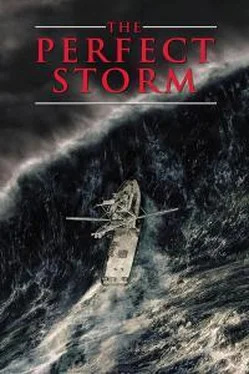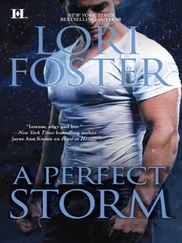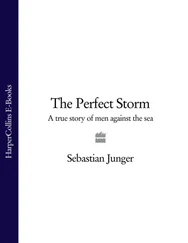Sebastian Junger - The Perfect Storm
Здесь есть возможность читать онлайн «Sebastian Junger - The Perfect Storm» — ознакомительный отрывок электронной книги совершенно бесплатно, а после прочтения отрывка купить полную версию. В некоторых случаях можно слушать аудио, скачать через торрент в формате fb2 и присутствует краткое содержание. Жанр: Триллер, Проза. Описание произведения, (предисловие) а так же отзывы посетителей доступны на портале библиотеки ЛибКат.
- Название:The Perfect Storm
- Автор:
- Жанр:
- Год:неизвестен
- ISBN:нет данных
- Рейтинг книги:3 / 5. Голосов: 1
-
Избранное:Добавить в избранное
- Отзывы:
-
Ваша оценка:
- 60
- 1
- 2
- 3
- 4
- 5
The Perfect Storm: краткое содержание, описание и аннотация
Предлагаем к чтению аннотацию, описание, краткое содержание или предисловие (зависит от того, что написал сам автор книги «The Perfect Storm»). Если вы не нашли необходимую информацию о книге — напишите в комментариях, мы постараемся отыскать её.
The Perfect Storm — читать онлайн ознакомительный отрывок
Ниже представлен текст книги, разбитый по страницам. Система сохранения места последней прочитанной страницы, позволяет с удобством читать онлайн бесплатно книгу «The Perfect Storm», без необходимости каждый раз заново искать на чём Вы остановились. Поставьте закладку, и сможете в любой момент перейти на страницу, на которой закончили чтение.
Интервал:
Закладка:
Whatever it is, one thing is known for sure. Around midnight on October 28th—when the storm is at its height off Sable Island—something catastrophic happens aboard the Andrea Gail.
THE ZERO-MOMENT POINT
Behold a pale horse, and his name who sat on him was Death, and Hell followed with him.
—REVELATION 6:8
IN the 1950s and 1960s, the U.S. Government decided to detonate a series of nuclear devices in the Pacific Ocean. The thinking was that deep water would absorb the shock wave and minimize the effect on the environment, while still allowing scientists to gauge the strength of the explosions. But an oceanographer named William Van Dorn, associated with the Scripps Institute in La Jolla, California, warned them that a nuclear explosion in the wrong place "could convert the entire continental shelf into a surf zone."
Concerned, the Navy ran a series of wave tank tests to see what kind of stresses their fleet could take. (They'd already lost three destroyers to a typhoon in 1944. Before going down the ships had radioed that they were rolling through arcs of 140 degrees. They downflooded through their stacks and sank.) The Navy subjected model destroyers and aircraft carriers to various kinds of waves and found that a single nonbreaking wave—no matter how big it was—was incapable of sinking a ship. A single breaking wave, though, would flip a ship end over end if it was higher than the ship was long. Typically, the ship would climb the wave at an angle of forty-five degrees, fail to gain the top, and then slide back down the face. Her stern would bury itself into the trough, and the crest of the wave would catch her bow and flip her over. This is called pitch-poling; Ernie Hazard was pitch-poled on Georges Bank. It's one of the few motions that can end ship-to-shore communication instantly.
Another is a succession of waves that simply drives the boat under—"founders," as mariners say. The dictionary defines founder as "to cave in, sink, fail utterly, collapse." On a steel boat the windows implode, the hatches fail, and the boat starts to downflood. The crew is prevented from escaping by the sheer force of the water pouring into the cabin— it's like walking into the blast of a firehose. In that sense, pitch-poling is better than foundering because an overturned boat traps air in the hold and can stay afloat for an hour or more. That might allow members of the crew to swim out a doorway and climb into a life raft. The rafts are designed to inflate automatically and release from the boat when she goes down. In theory the EPIRB floats free as well, and begins signalling to shore. All the crew has to do is stay alive.
By the late hours of October 28th the sea state is easily high enough to either pitch-pole the Andrea Gail or drive her under. And if she loses power—a clogged fuel filter, a fouled prop—she could slew to the side and roll. The same rule applies to capsizing as to pitch-poling: the wave must be higher than the boat is wide. The Andrea Gail is twenty feet across her beam. But even if the boat doesn't get hit by a nonnegotiable wave, the rising sea state allows Billy less and less leeway to maneuver. If he maintains enough speed to steer, he beats the boat to pieces; if he slows down, he loses rudder control. This is the end result of two days of narrowing options; now the only choice left is whether to go upsea or down, and the only outcome is whether they sink or float. There's not much in between.
If the conditions don't subside, the most Billy can realistically hope for is to survive until dawn. Then at least they'll have a chance of being rescued—now it's unthinkable. "In violent storms there is so much water in the air, and so much air in the water, that it becomes impossible to tell where the atmosphere stops and the sea begins," writes Van Dorn. "That may literally make it impossible to distinguish up from down." In such conditions a helicopter pilot could never pluck six people off the deck of a boat. So, for the next eight hours, the crew of the Andrea Gail must keep the pumps and engine running and just hope they don't encounter any rogue waves. Seventy-footers are roaming around the sea state like surly giants and there's not much Billy can do but take them head-on and try to get over the top before they break. If his floodlights are out he wouldn't even have that option—he'd just feel a drop into the trough, a lurch, and the boat starting up a slope way too steep to survive.
"Seventy foot seas—I'd be puttin' on my diapers at that point," says Charlie Reed. "I'd be quite nervous. That's higher than the highest point on the Andrea Gail. I once came home from the Grand Banks in thirty-five-foot seas. It was a scary fuckin' thought—straight up, straight down, for six days. My guess is that Billy turned side-to and rolled. You come off one of those seas cocked, the next one comes at a different angle, it pushes the boat around and then you roll. If the boat flips over—even with everything dogged down— water's gonna get in. The boat's upside-down, the plywood's buckling, that's the end."
When Ernie Hazard went over on Georges Bank in 1982, the motion wasn't a violent one so much as a huge, slow somersault that laid the boat over on her back. Hazard remembers one wave spinning them around and another lifting them end over end. It wasn't like rolling a car at high speeds, it was more like rolling a house. Hazard was thirty-three at the time; three years earlier he'd answered a newspaper ad and got a job on the Fair Wind, a lobster boat out of Newport, Rhode Island. The storm hit on their last trip of the year, late November. The crew were all good friends; they celebrated the end of their season at a steakhouse and then left for Georges Bank late the next morning. The winds were light and the forecast called for several more days of fair weather. By dawn it was blowing a hundred:
We were driving the boat well. You point the boat into the sea and try to hold your own until it blows out—stay there, take your pounding. You balance the boat, flood the tanks, try to save what you have on deck. There was the typical howling of wind in the wires and there was a lot of foam because of the wind, yellow foam, spindrift. We'd lose power on the waves because they were more foam than water, the propeller just couldn't bite.
It happened quick. We were close to the edge of the continental shelf and the seas were getting large, starting to break. Cresting. I remember looking out the pilothouse and this monster wave came and broke over the bow and forced us backwards. There was nothing to hold us there and we must have dug the stern in and then spun around. Now we're in a full following sea. We never went more than one more wave when we buried our bow in the trough and flipped over. There was the wave breaking and then a sensation of the boat turning, and the next thing I knew we were upside-down. Floating inside the boat.
I happened to surface in a small air pocket and I didn't know if I was upside-down or standing on the walls or what. I made a dive into the pilothouse and I could see some light—it could have been a window or a porthole, I don't know—and when I got back up into the wheelhouse there was no more air. It was all gone. I was thinking, "This is it. Just take a mouthful of water and it's over." It was very matter-of-fact. I was at a fork in the road and there was work to do—swim or die. It didn't scare me, I didn't think about my family or anything. It was more businesslike. People think you always have to go for life, but you don't. You can quit.
For reasons that he still doesn't understand, Hazard didn't quit. He made a guess and swam. The entire port side of the cabin was welded steel and he knew if he picked that direction, he was finished. He felt himself slide through a narrow opening—the door? a window?—and suddenly he was back in the world. The boat was hull-up, sliding away fast, and the life raft was convulsing at the end of its tether. It was his only hope; he wriggled out of his clothes and started to swim.
Читать дальшеИнтервал:
Закладка:
Похожие книги на «The Perfect Storm»
Представляем Вашему вниманию похожие книги на «The Perfect Storm» списком для выбора. Мы отобрали схожую по названию и смыслу литературу в надежде предоставить читателям больше вариантов отыскать новые, интересные, ещё непрочитанные произведения.
Обсуждение, отзывы о книге «The Perfect Storm» и просто собственные мнения читателей. Оставьте ваши комментарии, напишите, что Вы думаете о произведении, его смысле или главных героях. Укажите что конкретно понравилось, а что нет, и почему Вы так считаете.












